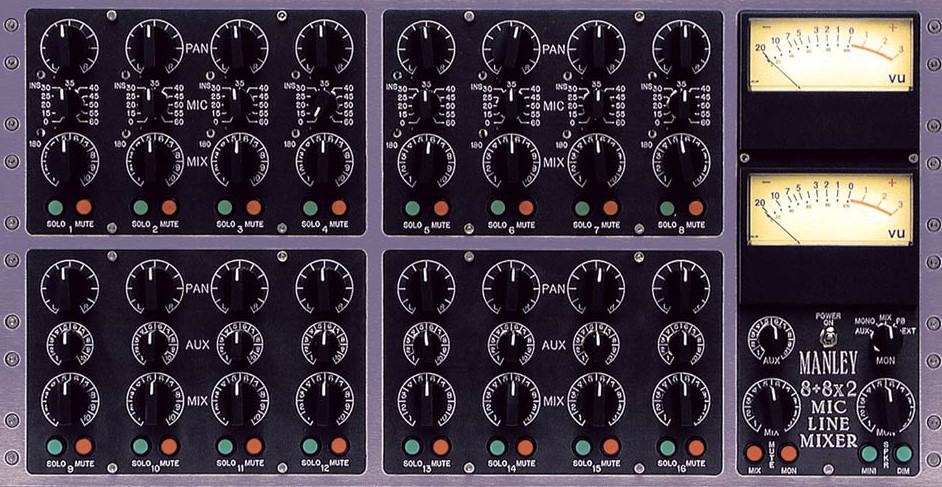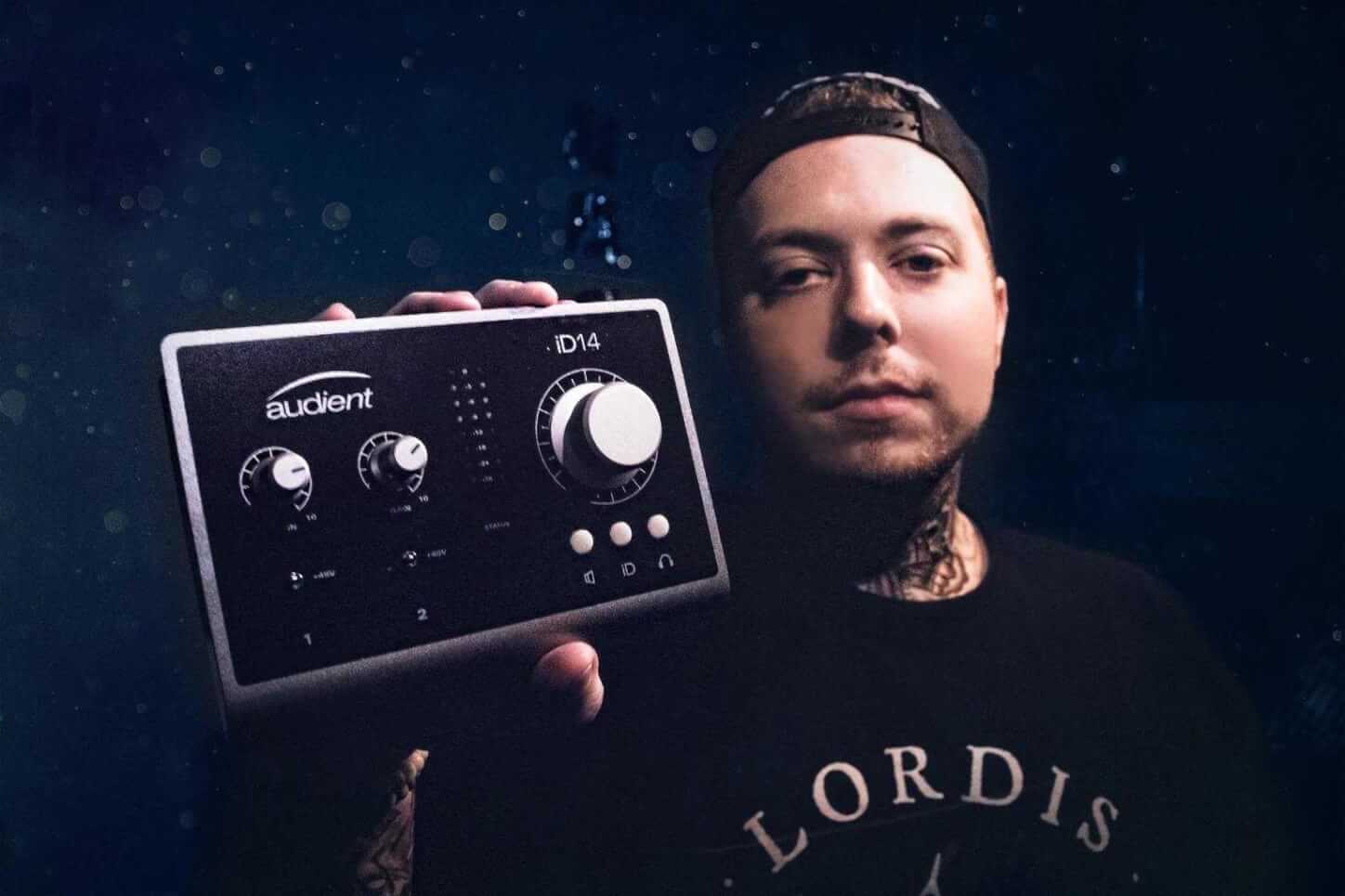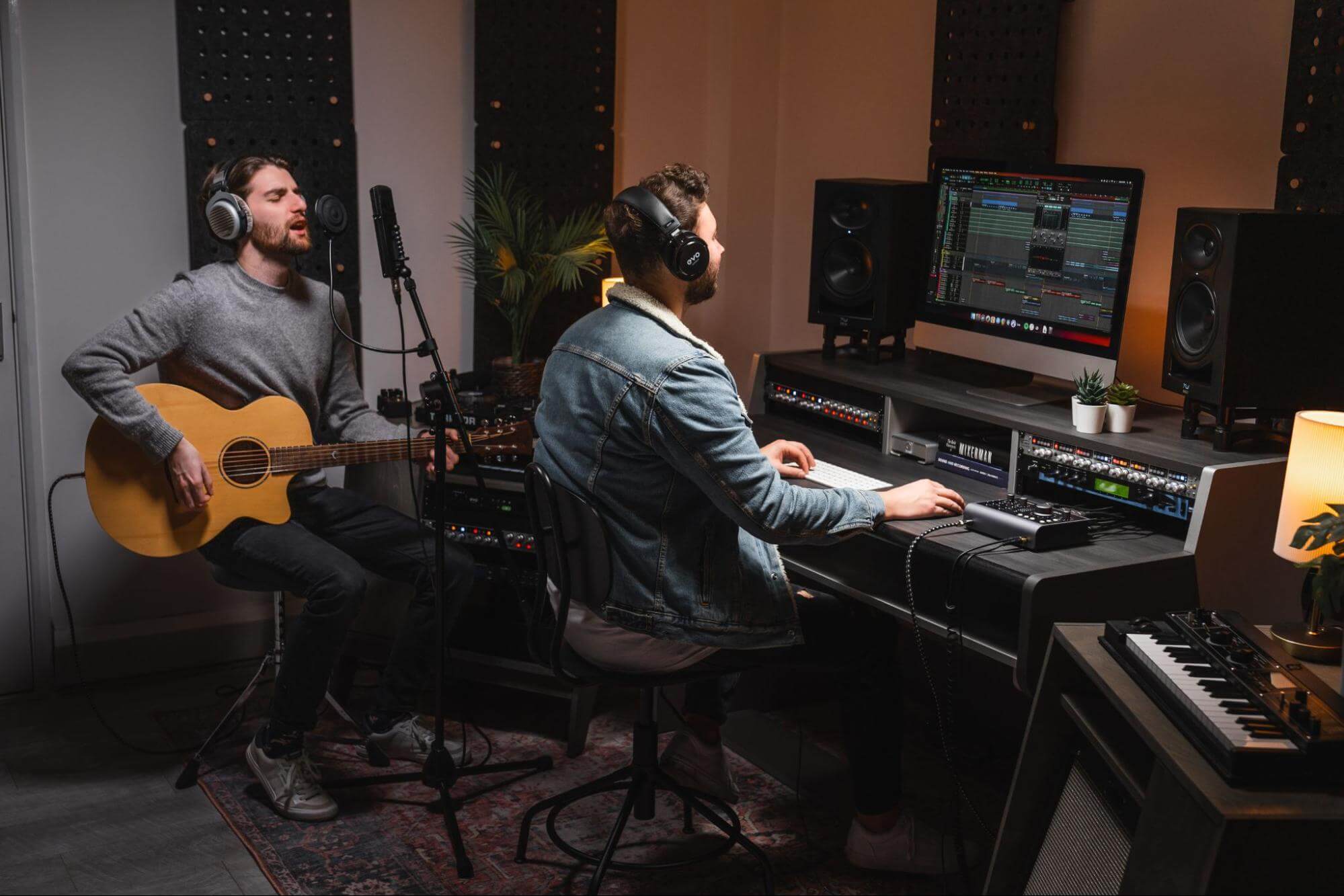Intro
We’ve all heard the classic debates about digital vs. analog. Instead of describing a “winning” position we want to talk about the specific sonic quality attributes that analog equipment can impart on your music.
The imperfections in analog signal chains are well known for producing recordings we’ve all come to know and love. These imperfections can introduce artifacts that our ears perceive as pleasant and “warm” – a term heavily associated with analog equipment. So what is it that makes analog equipment so great? How does it produce a sound that’s so pleasing to our ears, and what are its other advantages for mastering engineers?
We will aim to answer all of these questions in this article.
Creating a More ‘Rich-Sounding’ and Exciting Mix
Creating a More ‘Rich-Sounding’ and Exciting Mix
Have you wondered why many mixing engineers who strictly work on an analog desk produce mixes that sound so good?
And why many of them swear by working exclusively through analog signal chains?
Of course their preference often comes down to workflow that matches their style and technique, but there’s also a small secret lying in there: their console and gear probably has transformers, tubes, or harmonic saturation lying somewhere in their signal chain.
Running tracks through outboard analog equipment can create an extra level of dimension to music.
Most analog outboard gear relies heavily on transformers. Transformers have two or more coils of insulated wire that wrap around a magnetic core. This creates a process called magnetic coupling.
This process typically introduces harmonic distortions and other non-linearities into the signal.
Transformers can often lie at every input and output stage and it was common back in the 60’s and 70’s to have 10+ transformers per channel. On a 24 track console, that’s over 240 transformers!
These transformers were also known to reduce transients, hence – applying natural compression to the tracks, creating a more evenly balanced mix. Transformers also tend to thicken-up low frequencies.
These components inside of analog equipment such as transformers, active gain stages, op-amps, and tubes can add unique characteristics of saturation and distortion that can make your mix come together easier.
While many of analogue consoles are different, it’s easy to see the common relationship of harmonic saturation they all welcomely share.
Have you pushed the input or output on a preamp, equalizer, or compressor to find the saturation sweet-spot for an instrument or vocal that wasn’t cutting-through the mix? Suddenly, when you added saturation, it came to life.
It can work for individual instruments along with your mix bus too, making instrumentation a bit more present as well as adding a bit of enhanced color and smooth roundness over the mix.
It’s incredible to hear certain elements spring forward and become more audible, more exciting, and better balanced just by adding saturation.
This is why console emulation plugins with drive knobs and other ‘analog-related’ features are overwhelmly prevalent on digital plugins to sound more like the analog equipment.
It’s pretty amazing that these ‘imperfections’ are what we’ve all come to understand as a sonic enhancement.

The Plugin Alliance Black Box HG-2 tube circuit is a good example of a modern piece of equipment that has all the analog warmth with transformer based saturation
Transient Clipping Within the Analog Domain
Transient Clipping Within the Analog Domain

The Lavry AD122-96 MKIII (also referred to as the Lavry ‘Gold’) has earned its reputation to be the analog to digital converter of choice for the top recording, mixing, mastering, and post production studios all around the world.
In many cases, Peak clipping is more transparent than peak limiting. This is one of the reasons why mastering engineers often like to push their A/D convertors rather than use a peak limiter.
The converter clipping process has no attack and release time constants which could cause undesirable ‘pumping’ sounds that you could get from pushing a limiter or compressor.
Often mastering engineers push their converters to achieve loud levels without harming the audibly quality of a track.
Since every A/D converter is different, each converter will start to break-up at various levels. The sound will start to distort when you’re driving the gain up too high, just like a limiter will start smashing your transients when pushed too hard.
Great converters will be able to handle clipping with a generous amount of headroom before unwanted distortion will come into play.
If you’re going into the ‘red zone’ of these converters, it’s ok, you should still be able to push more signal into it. Just be sure to back off if you start to hear distortion.
The Sonic Benefits of Analog Summing
The Sonic Benefits of Analog Summing
Let me start by saying the spatial difference between summing in the analog realm vs. digital can be fairly subtle.
You’ll notice that the mix can get a bit wider, have a bit more depth and separation, possibly a better rounded and warm low end, with a bit more transparency.
If you A/B multiple high-quality summing mixers, you may notice they sound fairly similar making a subtle improvement in the spatial separation.
Why would you want more than that?
The best summing mixers shouldn’t have to make a drastic change. You wouldn’t want your summing mixing to add drastic artefacts that you’re unable to change? The best summing mixers make a small difference to the spatial qualities of your mix with high-grade, quality components.

The Neve 5059 Satellite is a well designed summing mixer. It completely eliminates cross-over distortion and is featured with various ‘Silk modes’ for adding high and low frequency saturation from their transformer, allowing your tracks to sparkle, or have thickness and density. It is also equipped with a texture control to saturate the output transformers that add musical harmonics.
The part where analog summing can really shine is when you CAN customize and change the sound of your mix with additional summing features.
Want to get that console sound?
Some summing mixers have subtle distortion circuits to thicken the mix. Some are built with transformers and valves to introduce harmonic distortion at the turn of a knob.
Many offer adjustable gain for each channel to gently reach that hot-gain ‘sweet-spot’ to add unique subtle distortion that you just can’t get when working in the digital domain.
Want to increase the width of your mix even further?
Some summing mixers have a mid-side stereo expansion feature. Some even have a monitor controller, Eq options, and some have A/D converters to convert your final mix.
The options are as endless as they are fun.
Analog summing, like most studio equipment, won’t drastically improve the quality of your mixes at the push of a few buttons, nor should they, but if you’d like to make your mix sound a little bit wider, a little bit more transparent, and have a little bit more depth while exploring various ‘coloring’ and routing features, analog summing is a great route to go!

The Manley 16×2 Analog Line Mixer uses Burr Brown INA103, OPA2604, Linear Technology LT1010 chips that have incredibly high headroom and very low noise.
Summing Up Using Analog for Mastering
Summing Up Using Analog for Mastering
Mastering with analog equipment shows another level of what analog can do to your sound.
Analog mastering equipment is known to have incredibly niche features that are essential to mastering engineers.
For instance, mastering engineers need to be able to recall their settings to exact previously used settings. To do this, many mastering equalizers and compressors have detented knobs (usually in 0.5dB steps) to accurately recall settings.
They’re also known to have extremely transparent gear in their arsenal to use if needed. To do this, high-quality components are needed to be able to provide loudness with incredibly low distortion.
For even more transparency, mastering equipment is sometimes known to exclude certain components such as transformers and tubes, further enhancing their transparency depending on the needed musical application.
Some studios have in-house technicians that build custom gear to their liking, often ‘hot-rodding’ equipment as well.
All of this extreme high-quality generally comes with a very high price tag, and is directed primarily to specialised mastering studios.
What’s running ‘under the hood’ of these studios are what truly shows the mastering engineer’s dedication to quality audio and the great lengths they’re willing to go to achieve the best results possible for the music they work on.

Above is a Manley Massive Passive stereo tube equalizer, more commonly associated with recording and mixing studios. This picture is similar but is the mastering version. It has detented knobs for consistent 1/2 dB steps and is not a “true parametric” eq like the first picture. The mastering version also has customized filters that are positioned lower and higher than the other version.
Starting into Analog Mastering
Starting into Analog Mastering
If you haven’t had a chance to use analog outboard gear for mastering and you’re interested in starting into analog mastering; listed below are two mastering processors that when combined can create a powerful mastering chain with 5 separate sculpting capabilities: equalization, compression, harmonic distortion, stereo imaging, and limiting.
The price tag for each these pieces of equipment is high, but considering that you get 5 powerful processors in only two units it’s a good value.

Unit 1: Rupert Neve Designs Portico II MBP. Although the name Neve isn’t traditionally associated with mastering, this piece of equipment hit the nail on the head: compression, harmonic distortion (tone control), stereo imaging, and limiting, all in one box – and it sound fantastic!
Seeing as the Portico II MBP doesn’t offer equalization, to complete a full analog mastering chain, we need an equalizer.

Unit 2: Maag Audio EQ4M. This equalizer may be a little limited for notch filtering and specific tight Q-ratio adjustments, but it’s a quality mastering equalizer that sounds great at a reasonable cost, and can do some real work towards creating polished masters.
Although these suggestions only scratch the surface of the amount of analog mastering equipment options available, these two units can create a quality analog mastering chain to start with.
If you’re considering purchasing mastering equipment I strongly recommend demo-ing any units that you may be interested in at your local store, or requested a demo unity directly from the company or distributing sales store.
Then, take time to use it on a number of different sources to see if if fits you specific needs and workflow before committing to a purchase.
Conclusion
Conclusion
It’s amazing to see the changes our industry has gone through over the last few decades, and it’s great to see that analog gear still has its place in our industry.
With tight budgets and session recalls taking up valuable time, it’s easy to overlook the value of using analog equipment, but here at Sage Audio Mastering we believe running through analog gear can make all the difference and still has a strong foothold for creating powerful sounding recordings and final masters.

About the author
Sage Audio is a specialised analog mastering studio located in Nashville Tennessee offering custom mastering services to local and remote clients throughout the world. For more articles written by Sage Audio please visit their mastering blog.
Our Products
-

2输入 | 2输出 音频接口
-

10输入 | 6输出 音频接口
-

6输入 | 4输出 音频接口
-

14输入 | 8输出 音频接口
-

10输入 | 14输出 音频接口
-

20输入 | 24输出 音频接口
-

24输入 | 32输出 音频接口
-

10输入 | 14输出 音频接口
-

10输入 | 4输出 音频接口
-

2输入 | 2输出 音频接口
-

4输入 | 4输出 音频接口
-

24输入 | 24输出 音频接口
-

开始录音所需的一切
-

8 通道智能前置放大器带 AD/DA
-

具有ADC的8通道麦克风前置放大器
-

具有 HMX 和 IRON 的 8 通道麦克风前置放大器
-

大型录音控制台
-

小型模拟录音控制台
-

小型模拟录音控制台
-

沉浸式音频接口与监听控制器
-

桌面监听控制器
-

环绕声控制器


